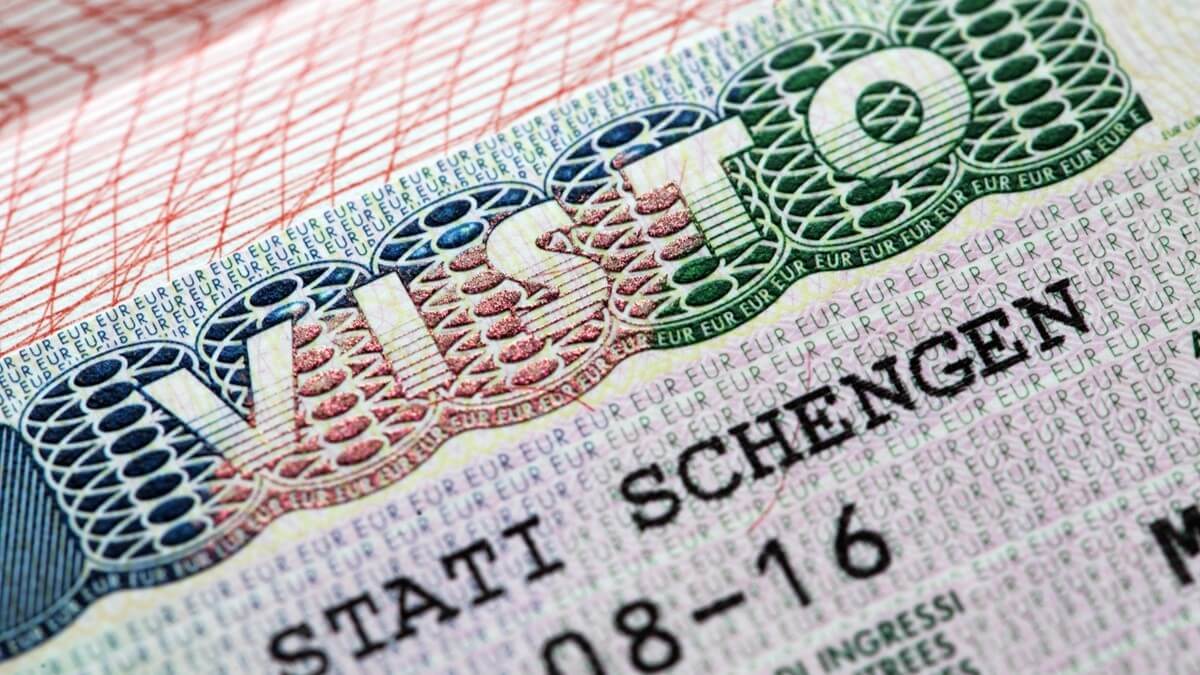ATMs in Italy: locations, fees, and tips (2025)
Read our essential guide to ATMs in Italy, including how to find them, fees, exchange rates, withdrawal limits and more.

Ever since Brexit, both British residents and expats living in the United Kingdom have some special considerations when travelling inside the EU, including Italy.
Depending on the citizenship status and the length of the stay, applying for an Italian Schengen visa from the UK may be necessary.
Here's a comprehensive guide on how to navigate the application process and make sure your visit is entirely worry-free.
If you're planning a trip to Italy, taking care of the financial side of things is another important consideration. There will be fees you'll need to pay but with a Wise account, the whole process will be both straightforward and transparent.
You'll have access to 40+ currencies, so you can spend in 150+ countries worldwide, including Italy.
Since 2020, when Brexit happened, there have been some important changes for UK travellers.
However, thanks to the 90/180 rule and various exemption agreements, it's not required for British citizens to obtain a Schengen visa for trips to Italy of up to 90 days across a 180-day period1. This is true for other countries in the Schengen Area of Europe as well.
Exceeding the 90-day limit can result in fines and bans on re-entry, so it's very important to check your travel dates.
There's also been one important update for nationals of countries that are exempt from Schengen visas and plan to visit for less than 90 days.
In 2026, they will be required to apply online via the European Travel Information and Authorization System and fill out the dedicated ETIAS form2.
If you're planning a stay longer than 90 days, you'll need to acquire a long-stay visa, known as the Type D visa. As for people living in the UK but coming from countries that don't have an exemption agreement with the EU, they will need a Schengen visa to visit Italy for tourism or business.
The UK BRP card or UK Biometric Residence Permit (BRP) has now been replaced with an eVisa. An eVisa does not exempt you from needing a visa to enter Italy.
This eVisa only confirms your right to live and work in the UK, but it doesn't replace a Schengen visa. If your nationality requires a visa to enter the Schengen Area, you'll still need to apply for an Italy Schengen visa from the UK, regardless of your eVisa status.
This means that if you plan to stay longer than 90 days in the Schengen area, or your nationality requires a visa to enter these countries, the eVisa is not enough.
As you can see, there are many possible case scenarios in which you would need to apply for an Italian Schengen visa. As a result, the documentation you'll need varies depending on factors such as your nationality, country of origin, and the purpose of your trip.
There are over a hundred countries that don't have an EU visa waiver agreement, including China, India, Russia, and more3, each with specific requirements for the application process.
That being said, here's what's necessary in most cases:
Italy is a regular mention on the list of the easiest Schengen visas to get from the UK, with the rejection rate for 2024 being only 10.89%, despite receiving well over a million applications each year4.
And, the process of getting one is pretty straightforward, so let's break down the entire application timeline to make sure you're on the right track.
First and foremost, you will need to figure out the specific type of visa you need5.
You’ll need to know the length of your stay, as well as whether you'll visit only Italy or plan to expand your European trip.
Here are the options:
In the UK, the visa application process will be handled by the Italian consulates in either London or Edinburgh, depending on your place of residence.
First up, there is an online application form you will need to fill out.
After that, an in-person appointment will be scheduled at the consulate or a dedicated VFS Global centre6, which is the official partner of the Embassy of Italy in the UK.
During the online process or the appointment itself, you will need to cover the application fee, which depends on the type of visa you're trying to acquire. For this appointment, you will need to bring all the required documents, so make sure you start gathering them early.
Using the reference number from the invoice issued by the Visa Application Centre allows you to track the status of your application online.
After the decision has been made, it's time to pick up your documents yourself or have them returned to you via courier. This depends on the specific centre where you've had your appointment, so make sure to inquire about the options during your visit.
Even though the application process for an Italian Schengen visa is fairly straightforward, mistakes can happen, and sometimes, even the smallest oversight can result in rejection.
That's why you should be extra careful during the whole ordeal, especially when gathering the documents. Double-check every document, making sure it's up to date, includes correct information, and is translated if needed.
When it comes to travel details, it's best to present as much information as possible. This includes return tickets, day-by-day itineraries, full accommodation details, and recent bank statements that show you are able to cover this visit from a financial standpoint.
To ensure a smooth application process, it's a good idea to apply as early as possible. There's a window between six months and 15 working days before your visit7, so make sure not to wait until the last minute.
If you're unsure about any part of the application process, or you're already starting to stress about the potential mistakes, there's always the option to hire an agency to help you with the entire ordeal.
These agencies are experienced at handling complex paperwork and communicating with the appropriate authorities on your behalf, all while offering personalised guidance every step of the way.
Here are some agencies that can make applying for an Italian Schengen visa as easy as possible:
As we've already covered, making a Schengen visa appointment is done by reaching out to either the Italian consulates or one of the agencies. Here’s how to make an appointment at one of the VFS Global centres.
You need to fill out an application form and cover the fees, after which you will be able to schedule an appointment to submit documents and have your biometric information taken.
If you're travelling with family or a group of people, individual appointments need to be made.
When it comes to cancellation, doing it more than 48 hours before the appointment makes you eligible for a refund. You’ll just need to send a cancellation email to the VFS helpline (info.schengen@vfshelpline.com) with your web reference number, date of the appointment, and your reason for cancellation8.
Remember that if you're having any trouble with making an appointment, you can always reach out to a professional agency for help.
As of 2024, the European Commission has revised visa fee amounts and increased them to €90 for adults and €45 for children aged six to twelve, while children under this age limit can apply free of charge9.
This is applied to short-stay Schengen visas and is universal for all designated countries, which means that other types of visas come with their own fees, with factors such as the travel intent taken into account.
You can pay this fee online during the application process, or you can cover it during the appointment itself. However, keep in mind that they are usually paid in euros, so you might be dealing with poor exchange rates.
Compared to the rest of the process, covering Schengen visa fees might seem simple. However, these** fees are usually paid in euros**, and some banks and credit card providers often offer poor exchange rates and extra fees.
This can quickly add up hidden costs, especially if you're scheduling appointments for the whole family or trying to get a long-stay visa. To keep it simple and transparent, a Wise account could help.
With a Wise account, you can access the mid-market exchange rate, meaning no extra exchange fees when arranging your visa appointment, travel insurance, accommodation, and anything else you might need to pay for during your stay.
Plus, if you're extending the trip to other countries, you will be able to spend in 40+ currencies with the multi-currency Wise card with low, transparent fees* at the mid-market rate.
Sources used in this article:
1. AXA Schengen - Schengen visa information - Italy
2. European Union - ETIAS information
3. AXA Schengen - Schengen visa requirements
4. Atlys - easiest countries to get a Schengen visa
5. Esteri.it - types of Italian visa and durations
6. VFS Global - Italian visa appointment
7. European Commission - Italian visa information
8. FVS Global - step-by-step application process
9. European Commission - revised visa fee amounts
*Please see terms of use and product availability for your region or visit Wise fees and pricing for the most up to date pricing and fee information.
This publication is provided for general information purposes and does not constitute legal, tax or other professional advice from Wise Payments Limited or its subsidiaries and its affiliates, and it is not intended as a substitute for obtaining advice from a financial advisor or any other professional.
We make no representations, warranties or guarantees, whether expressed or implied, that the content in the publication is accurate, complete or up to date.

Read our essential guide to ATMs in Italy, including how to find them, fees, exchange rates, withdrawal limits and more.

Italy is just a flight away. Learn how to shop tax-free at Gucci and many other stores, and obtain a VAT refund in cities like Rome, Milan, and Florence.

Read our complete guide to the Italy digital nomad visa, covering fees, documents, eligibility requirements and how to apply.

Travelling to Venice soon? Find out everything about the Venice tourist tax and essential travel tips.

Check out our in-depth guide on everything you need to know about buying a prepaid Italy SIM card, including different providers, pricing, and features.

Travelling to Rome soon? Find out everything about the Rome city tax and essential travel tips.